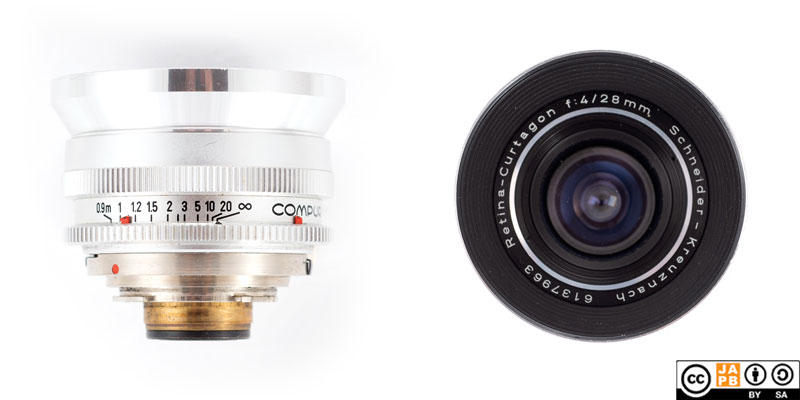Pekka Buttler, 01/2025
Quick summary
Schneider-Kreuznach is the veritabel optics decathlete, in that they have manufactured high-quality optics and lenses for pretty much every imaginable platform ranging from mobile phone camera lenses to large format lenses, enlarger, repro and macro lenses, projector lenses, cine lenses, and various industrial applications.
With a pedigree so prodigious this company profile will focus on Schneider-Kreuznach to the extent that it produced still photography lenses for 35 mm and medium format interchangeable lens cameras.
History of Schneider-Kreuznach
Schneider-Kreuznach – alike Meyer-Optik Görlitz, Carl Zeiss Jena, Leitz Wetzlar, and many others – is one of those German optics companies that feature the location of the company (headquarters) quite prominently in the company trademark. The company behind that trademark was founded as Optische Anstalt Jos. Schneider & Co in the town of Bad Kreuznach in 1913. in 1922 the company changed its name to Jos. Schneider & Co., Optische Werke, Kreuznach.
In 1936 Jos. Schneider & Co., Optische Werke founded ISCO Göttingen as subsidiary that was to specialise in optics for the military – especially for aerial photography. ISCO Göttingen would continue as a largely separate enterprise until being reintegrated into Schneider-Kreuznach in 2011 (today the legal name of the company is Jos. Schneider Optische Werke GmbH; The Jos. is short for Joseph).
The heyday of Schneider-Kreuznach was in the early post-WWII decades. With the German photo industry still dominant and with a wide range of formats (from cine to large format) still popular, Schneider’s was able to use its wide portfolio of technologies and designs to its advantage.
During this era it was also typical that (as Schneider-Kreuznach would often be selling the lenses with the same design and mainline specifications for several mutually incompatible systems) Schneider-lenses clearly indicated the photographic system they were intended for. Hence Schneider-Kreuznach interchangeable lenses often had name combinations such as
• “Retina-Curtagon” (wide-angle for Kodak Retina DKL cameras)
• “Rollei SL-Xenon” (fast standard for Rollei QBM)
• “Balda-Xenar” (slow standard lens for Balda DKL cameras)
• “C-Xenar” (Xenar-type for C-mount cine cameras)
• “Retina Tele-Xenar” (Tele-lens for Kodak Retina DKL cameras
• “TELE-XENAR electric” (Tele lens for electric variant of M42)
• “Edixa-Curtagon” (wide angle for Edixa electronica or for Edixa variant of M42 1)

But the swansong of the (West-)German photo industry also meant that Schneider started pruning its format portfolio, starting with cutting everything consumer-grade. Today Schneider-Kreuznach has largely withdrawn from manufacturing optics for still photography. However the company is still prominent in cine lenses as well as various industrial applications.
Scneider-Kreuznach lens names:
Alike most German companies, Schenider-Kreuznach had the habit of giving its lenses names that echoed the lens’ design or use-case. Some of the typical Schneider-Kreuznach lens names are:.
• Curtagon (wide-angle lenses for 35 mm format, 2nd generation retrofocus)
• Super-Angulon and Angulon (symmetric wide-angle lenses for large format)
• Radiogon (moderate winde-angle for 35 mm format, first generation retrofocus)
• Symmar (symmetric, moderate wide-angle for large format)
• Xenar (Tessar-type lenses, 35 mm format to large format)
• Xenon (fast, standard lenses, double-Gauss design, 35 mm format)
• Xenotar (fast, standard lenses, modified double-Gauss design, medium format and larger)
• Tele-Arton (short tele lenses)
• Tele-Xenar (tele lenses)
• Componon (enlarger lenses)
Great article – thank you for taking the time to dive into the history of our company and our lenses. If you’re interested in looking up the manufacturing data of our lenses, feel free to check out this resource: https://schneiderkreuznach.com/en/industrial-optics/knowledge-hub/manufacturing-dates-of-lenses